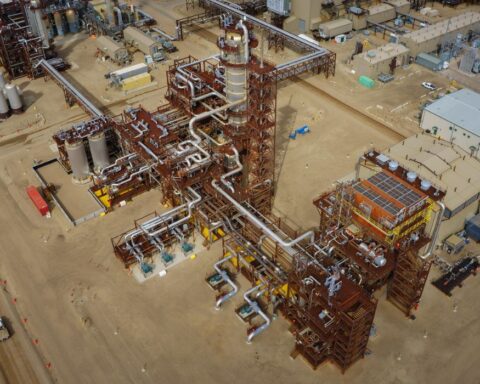Alexandra Tavasoli is a postdoctoral associate studying the carbon dioxide economy at the Massachusetts Institute of Technology. Stefan Hostetter is a community director at the Center for Social Innovation, a co-host of Green Majority Radio, and co-chair of the Toronto Climate Action Network.
What’s your first memory of fire? Perhaps a fading log, crackling as it warms your toes on a late summer evening? Maybe your family gathered around a fireplace during the holidays? To say that fire is a constant in the human experience is well past the point of cliché. We have candles to celebrate each year of our life, and cremation at the end of it. We burn fires to get around our own planet, and to visit others.
Maybe you didn’t notice that fire is so central to your life until the recent public fervour surrounding the potential phase-out of stoves that burn natural gas, propane or other fossil fuels and in the process emit climate-heating carbon dioxide (CO2) and methane into the atmosphere, as well as other toxic compounds like carbon monoxide and benzene. Many home furnaces, hot water heaters, fireplaces and electricity generators work the same way.
Today, 83% of CO2 emitted comes from burning fires for heat, electricity and transportation. We burn carbon-based fuels such as coal, wood, natural gas, biomass, garbage, sewer sludge or oil to release the energy we use to produce electricity, drive our cars, heat our homes, grow food and generally provide the privileged in the world the comforts of 21st-century living.
Since human-created fires are the principal source of CO2 emission into our atmosphere, the consequences of its endless proliferation are now being brought to bear in the climate crisis that threatens the ability of humans to live on the planet comfortably, if at all.
Alongside the outrage about having to change the way one of your home appliances operates (although the U.S. Consumer Product Safety Commission has made it clear that it does not intend to ban gas stoves, some cities are initiating bans on gas stoves in new homes), there is potentially a bigger question at hand: must humans give up fire as a technology to save the earth?
To stay below the 1.5°C warming threshold recommended by the Intergovernmental Panel on Climate Change, an economy-wide rapid transition to zero-emission energy sources like wind, solar, geothermal and nuclear can help electrify the industrial, heating and transportation systems responsible for most of our CO2 emissions. At present, our current emission trajectory has us on target to reach 3°C of warming by the end of the century, a scenario children born today would see.
To accomplish this, we have a limited number of fires left to burn to implement the huge changes required to build a truly sustainable economy. Building this new economy is going to require a lot of energy, which will require the use of fossil fuels in the short term. Will we burn the fires we have left to build a long-term sustainable economy, or will we burn them at a higher risk of damaging the planet irreparably?
In 2021, the Global Carbon Project estimated that we could emit 420 billion tonnes of carbon dioxide (or 420 gigatonnes) and still limit global warming to 1.5°C. Since we emit about 40 billion tonnes each year, we have about 10 years to implement big changes.
Still, leaders are negotiating with the scientific reality to keep the fires burning. They have mostly opted for a scenario in which fossil fuel use continues throughout the century, and the 1.5°C threshold is temporarily overshot and returned to safe levels at some point thereafter. To accomplish this, they plan largely to rely on the promise of carbon capture, utilization and storage technologies (in combination with other similar but differently branded strategies like CO2 removal and negative emission technologies) to remove the excess CO2 from our atmosphere, despite high risk that the ecological destruction that will be wrought in an overshoot scenario will not be reversible.
Others want to burn alternative fires, using fuels like hydrogen or ammonia, despite equal health and safety concerns associated with their transport, storage and use. Others want to burn biomass, from livestock manure, human waste or plant matter grown on the limited agricultural land we have, or from residues collected from forest or crop floors, a practice that can lead to soil degradation and can potentially emit two to three times more carbon into the air than fossil fuel use.
Carbon capture and storage will likely play an important role in reducing CO2 concentrations, and we should continue research into and deployment of all carbon removal and avoidance pathways. But relying on future technological development entirely to justify a refusal to move away from fossil fuel use today is an extremely risky bet that policy-makers are making on our behalf.
While we wait for leaders to show signs of some decisive action of a managed energy transition away from fossil fuels, we can be sure of one thing in our existing way of being: fire begets fire.
It seems that no matter how clear and present the danger may be or how close the fire comes to the roadside, we cannot imagine a world beyond our most valuable and dangerous tool. Yet, there is only so much left to burn before we join the pyre. The question must be asked: what will be our last fire?







